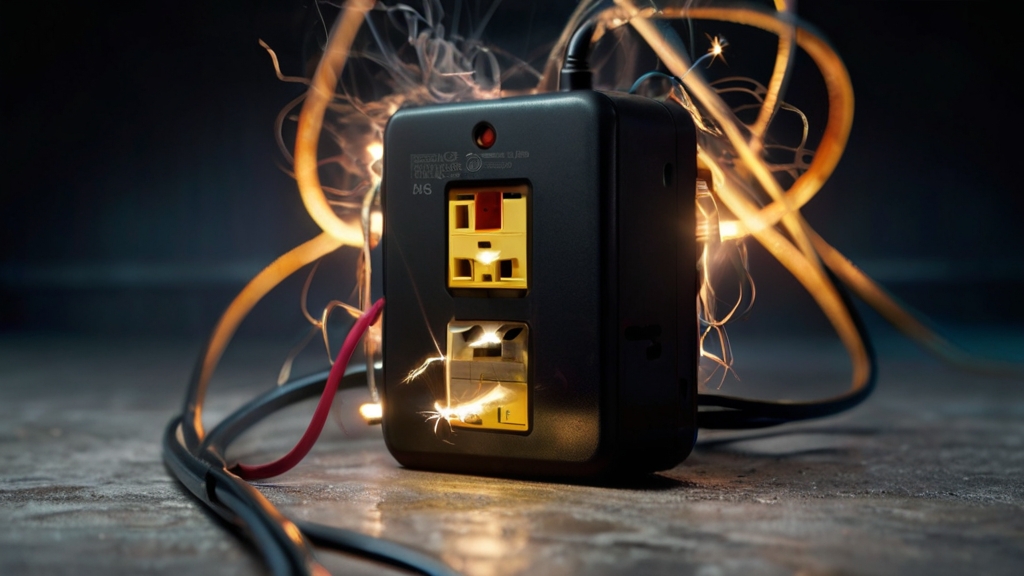Surge protectors are essential devices designed to safeguard our valuable electronic equipment from power surges and spikes. They serve as a barrier between our devices and the unpredictable nature of electrical currents, providing peace of mind and protection against potential damage. However, like any other electronic device, surge protectors have a lifespan and can deteriorate over time, compromising their effectiveness. In this article, we’ll explore ten signs that indicate it’s time to replace your surge protector to ensure continued safety and protection for your electronics.
Table of Contents

Signs You Need to Replace Your Surge Protector
1. Flickering Lights
One of the telltale signs that your surge protector may be failing is if you notice flickering or dimming lights when your devices are plugged in. This could indicate that the surge protector is struggling to regulate the flow of electricity, which can pose a safety hazard.
2. Damaged Outlets
Inspect the outlets on your surge protector for any signs of damage, such as cracks, burn marks, or loose connections. Damaged outlets not only indicate potential internal issues with the surge protector but also pose a risk of electrical shock or fire.
3. Age of the Surge Protector
Consider the age of your surge protector. Like most electronic devices, surge protectors have a limited lifespan and may become less effective over time. If your surge protector is more than a few years old, it’s worth considering replacing it to ensure continued protection for your devices.
4. Visible Wear and Tear
Examine the exterior of your surge protector for any visible signs of wear and tear, such as frayed wires, melted plastic, or corroded components. These signs suggest that the surge protector may be compromised and no longer providing adequate protection.
5. Tripped Circuit Breakers
If you frequently experience tripped circuit breakers when using your electronic devices, it could be a sign that your surge protector is overloaded or malfunctioning. Tripped circuit breakers indicate that the surge protector is unable to handle the electrical load, putting your devices at risk of damage.
6. Devices Not Functioning Properly
If your electronic devices are experiencing issues such as random reboots, freezes, or malfunctions, it could be due to a faulty surge protector. Inconsistent power delivery from a failing surge protector can cause disruptions in device functionality and performance.
7. Burning Smell
A burning smell emanating from your surge protector is a serious warning sign that should not be ignored. It indicates that the surge protector may be overheating or experiencing internal damage, potentially leading to a fire hazard. Immediately unplug the surge protector and replace it with a new one.
8. History of Power Surges
If your area is prone to frequent power surges or lightning strikes, it’s essential to regularly assess the condition of your surge protector. Even if it appears to be functioning normally, it may have absorbed multiple surges over time, diminishing its effectiveness.
9. Insufficient Protection for New Devices
As technology advances, electronic devices become more sophisticated and sensitive to power fluctuations. If you’ve recently purchased new, high-value electronics, ensure that your surge protector provides sufficient protection to safeguard them against potential damage.
10. Manufacturer Recommendation
Finally, consider the manufacturer’s recommendation regarding the lifespan of your surge protector. Some manufacturers provide guidelines on when to replace surge protectors based on factors such as usage, environmental conditions, and model specifications.
Consequences of Ignoring Signs
Ignoring the signs that indicate you need to replace your surge protector can have serious consequences, including:
- Risk of Electrical Fires: A failing surge protector can pose a fire hazard due to overheating or electrical arcing.
- Damage to Electronic Devices: Without adequate protection, your electronic devices are vulnerable to damage from power surges, potentially resulting in data loss or hardware failure.
- Safety Hazards: Damaged surge protectors can pose safety hazards such as electrical shock or electrocution, particularly if they are used in wet or humid environments.
Tips for Choosing a New Surge Protector
When replacing your surge protector, consider the following tips to ensure you select the right one for your needs:
Assessing Voltage and Joule Ratings
Look for surge protectors with higher voltage and joule ratings, as they offer better protection against larger surges.
Clamping Voltage
Choose a surge protector with a lower clamping voltage, as it will provide faster and more effective protection for your devices.
Response Time
Opt for a surge protector with a faster response time, as it will react more quickly to sudden voltage spikes.
Number of Outlets
Consider the number and types of outlets you need, ensuring that the surge protector has enough capacity to accommodate all your devices.
Warranty Coverage
Select a surge protector with a comprehensive warranty to provide added peace of mind and protection against potential defects or malfunctions.
Conclusion
In conclusion, ensuring the safety and protection of your electronic devices is paramount, and a functioning surge protector plays a crucial role in achieving this goal. By recognizing the signs that indicate you need to replace your surge protector and following the tips for selecting a new one, you can safeguard your valuable electronics against the damaging effects of power surges and spikes. Don’t wait until it’s too late—replace your surge protector today and prioritize the safety of your devices and home.
FAQs (Frequently Asked Questions)
How often should I replace my surge protector?
It’s recommended to replace surge protectors every 2 to 3 years, or sooner if you notice any signs of wear or damage.
Is it permissible to connect one surge protector into another surge protector?
It’s not advisable to daisy-chain surge protectors together, as it can overload the electrical system and diminish their effectiveness. Instead, use a single surge protector with adequate capacity for your devices.
Do surge protectors protect against lightning strikes?
While surge protectors can mitigate damage caused by lightning-induced surges, they may not provide complete protection.



